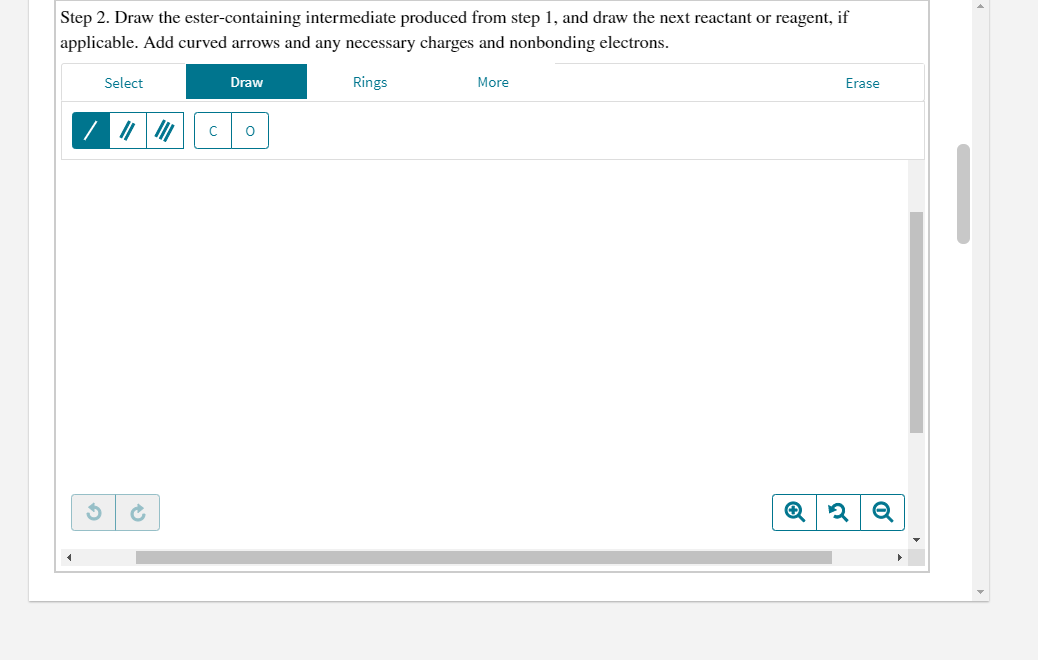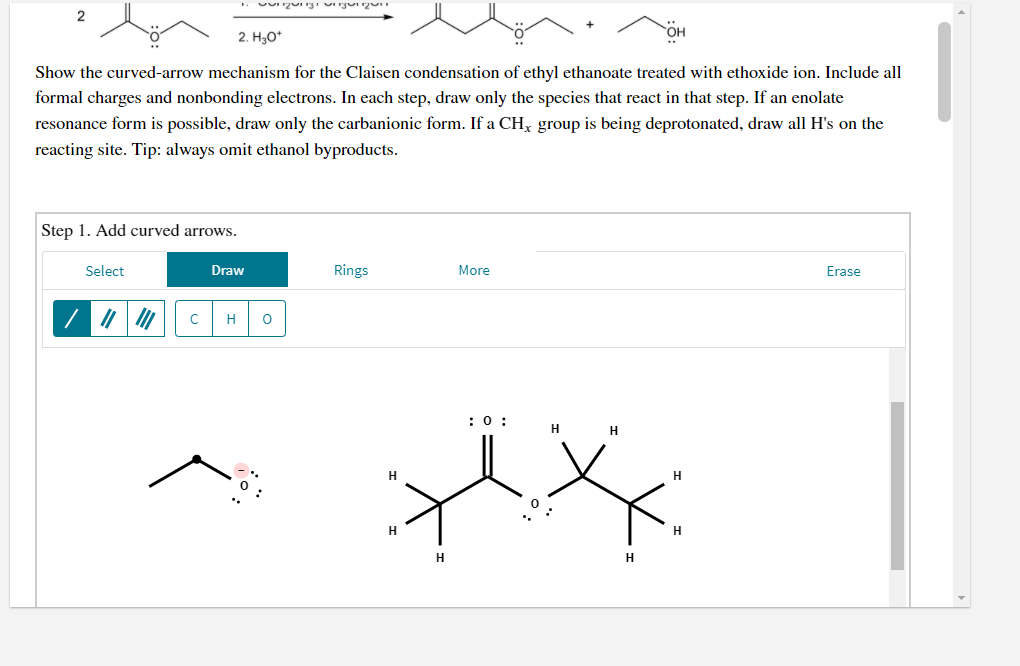Step 2. Draw the ester-containing intermediate produced from step 1, and draw the next reactant or reagent, if applicable. Add curved arrows and any necessary charges and nonbonding electrons. Select Draw Rings More Erase
Step 2. Draw the ester-containing intermediate produced from step 1, and draw the next reactant or reagent, if applicable. Add curved arrows and any necessary charges and nonbonding electrons. Select Draw Rings More Erase
Organic Chemistry: A Guided Inquiry
2nd Edition
ISBN:9780618974122
Author:Andrei Straumanis
Publisher:Andrei Straumanis
Chapter14: Elimination
Section: Chapter Questions
Problem 22E
Related questions
Question

Transcribed Image Text:Step 2. Draw the ester-containing intermediate produced from step 1, and draw the next reactant or reagent, if
applicable. Add curved arrows and any necessary charges and nonbonding electrons.
Select
Draw
Rings
More
Erase

Transcribed Image Text:2. H3O*
Show the curved-arrow mechanism for the Claisen condensation of ethyl ethanoate treated with ethoxide ion. Include all
formal charges and nonbonding electrons. In each step, draw only the species that react in that step. If an enolate
resonance form is possible, draw only the carbanionic form. If a CH, group is being deprotonated, draw all H's on the
reacting site. Tip: always omit ethanol byproducts.
Step 1. Add curved arrows.
Select
Draw
Rings
More
Erase
:0 :
H.
H
H
H
H
Expert Solution
This question has been solved!
Explore an expertly crafted, step-by-step solution for a thorough understanding of key concepts.
This is a popular solution!
Trending now
This is a popular solution!
Step by step
Solved in 2 steps with 1 images

Knowledge Booster
Learn more about
Need a deep-dive on the concept behind this application? Look no further. Learn more about this topic, chemistry and related others by exploring similar questions and additional content below.Recommended textbooks for you

Organic Chemistry: A Guided Inquiry
Chemistry
ISBN:
9780618974122
Author:
Andrei Straumanis
Publisher:
Cengage Learning

Organic Chemistry: A Guided Inquiry
Chemistry
ISBN:
9780618974122
Author:
Andrei Straumanis
Publisher:
Cengage Learning